
As the place where you deposit checks and from which you pay your bills, checking accounts serve as the workhorses of personal finance. A savings account, however, is just as necessary when it comes to meeting financial goals. If you have your eye on making a big purchase such as a new car, a nice piece of jewelry or even a killer vacation to make up for the one you had to cancel due to the pandemic, chances are that you are using your savings account to set aside money for it.
If you need a savings account or are looking to upgrade your current bank account situation, hold on just a second. Before you head to a bank and open up any old savings account, you need to know what they are all about. The first factor you have to consider is interest. Even a high-interest savings account will only deliver a modest return. A certificate of deposit, or CD, may provide a decent interest rate and the risk is minuscule — given that it is federally insured — but it usually locks up money for a set period. That may be good for reaching a savings goal, but it is problematic if you want your savings to double as an emergency fund. You could invest in equities or a mutual fund, but those come with higher risks. The low risk and availability of your funds are the primary draws of a savings account.
However, what about high-yield savings accounts? They are still not going to rake in a lot of money. We want to be clear about this: High-yield savings account interest rates, which are influenced — but not directly set — by the Federal Reserve, currently top out at around 1%. Therefore, if your savings account had an account balance of $100,000 for a year, you would earn approximately $1,000 in interest on it. That is not much, even with compound interest.
Yet, with all the protections of federal deposit insurance (securing balances up to $250,000) and relatively unfettered access to your money, savings accounts serve a purpose. They are also easy to apply for and the eligibility requirements are minimal; even a child can open an account with a parent or guardian co-signer and the minimum initial deposit.
Most savings accounts fall into one of two categories. There is the online-only kind, which is typically offered by newer banks without a retail presence. With no branches to maintain or tellers to pay, online banking tends to offer a higher annual percentage yield, or APY, which pays you more in interest over time; these high APY accounts are often referred to as “high yield.” In contrast, most bigger institutions, regional banks and local credit unions with physical branches provide a way to make deposits or withdraw funds in person and have a face-to-face conversation.
Again, there is none of that with an online bank: All your transactions are done online or using another bank’s ATM and your customer service options are typically limited to an online chat, email or phone call. For people looking for a high APY who are already familiar with mobile banking and are comfortable with direct deposit, this is fine. If you want to interact with a person, however, online banking might not be for you.
There is also a third scenario: Some banks have branches only in certain states and may offer a high-yield online-only deposit account exclusively to people who do not live in those states. According to Ken Tumin, founder and editor of DepositAccounts.com, these older institutions see specialized high-yield accounts as a way to receive more deposits without having to build a physical branch.
In choosing the best savings accounts, we evaluated more than a dozen offered by a wide variety of national and regional banks. Though we steered clear of local banks and financial institutions that do not serve a broad swath of customers in the US, it may be worthwhile to take a close look at your local bank and credit union options as you build your savings plan. You want to find an account that offers a consistently high interest rate regardless of your daily balance — at the moment, savings account APYs may fluctuate on a weekly basis — as well as low or no fees, low or no minimum balance, have FDIC insurance and convenient options for making withdrawals and deposits (direct deposit is key) online or in person.
We also looked into factors like mobile banking, minimum deposit requirement, how easy it is to check your account balance, if there’s an ATM fee, whether the financial institution requires a monthly maintenance fee, whether there’s a minimum balance requirement and so much more.
Whether you want to open your first savings account or find a different place for your money, you have come to the right place. As mentioned above, we’ve looked at multiple savings accounts and our picks for the best savings account, which we frequently update, can help you find the right bank for your situation.
Bank/institutionHigh Yield Chime Savings AccountSallie Mae SmartyPigCiti AcceleratePNC High Yield Savings AccountVio Bank Online High Yield Savings Account
APY0.5%Up to 0.7%0.5%0.4%0.53%
Minimum deposit$0$0$0$0$100
Estimated annual earnings on $1,000 deposit$5Up to $8$5$5.00$5.70
Branch accessNoNoYesNoNo
Monthly fee$0$0$4.50 when your balance falls under $500 $0 $5 when you choose to receive paper statements
High Yield Chime Savings Account
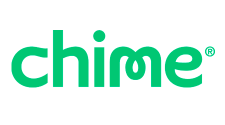
If you’re comfortable working with a financial institution that’s exclusively online, Chime’s high-yield account offers the best combination of features for a personal savings account: no fees, convenient ways to move money in and out, a slick app – and one of the higher interest rates available with .5% APY savings account rate. You also get a free Chime checking account – the two are a package deal, like conjoined twins – which serves as the primary mechanism for depositing and withdrawing funds.
You can deposit checks remotely via Chime’s modern, capable app, and the included Visa debit card can be used at more than 38,000 MoneyPass and Visa Plus Alliance ATMs. (You can also deposit cash at any store in the Green Dot network, which includes Walgreens, CVS and Family Dollar, though the onerous $4.95 per deposit fee should make that an option of last resort.) There is no minimum balance required, and Chime lets you round up purchases to the nearest dollar and deposit the difference in your savings account.
Interest rate: 0.5% APY
Availability: All 50 states
Minimum deposit: $0
Monthly fees: $0
Sallie Mae SmartyPig
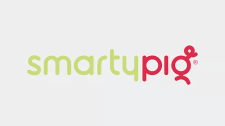
Sallie Mae, perhaps best known as a student loan provider, also offers a goal-based savings account with no minimum deposit and the highest APY currently available. The company frames its SmartyPig account as “a free online piggy bank for people saving for financial goals like holiday gifts, vacations, and even retirement.” That noted, using this bank account to save for retirement isn’t recommended — especially because of Sallie Mae’s odd, regressive approach to interest rates, which start at a 0.7% higher APY on balances below $2,500 and gradually decrease to 0.55% on balances above $50,000.
As such, this account is best-suited to people who are new to saving, who plan to build or maintain balances under $10,000 and who might ultimately benefit from less convenient access to their money. That is because the SmartyPig account comes with no ATM card, Sallie Mae does not have branches where you can make deposits or withdrawals, and there is no app to enable easy transfers. (Though you can transfer or withdraw funds at any time through the bank’s web-based interface, customers are encouraged to set up a recurring automatic deposit from a paycheck or other account.) Still, if you are looking to save a modest amount of money for a specific purpose — and maximize your interest rate while you are doing it — SmartyPig is worth a look.
Interest rate: Up to 0.7% APY
Availability: All 50 states
Minimum deposit: $0
Monthly fees: $0
Citi Accelerate
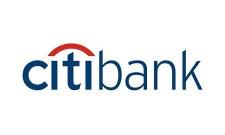
If you prefer dealing with a large bank, Citi’s Accelerate account offers a competitive APY and all the benefits of a national chain with branches across 42 US states. You get free access to more than 60,000 Citi and other surcharge-free ATMs, 24/7 customer service and other perks if you link a Citi checking account to your savings account. Though this bank account requires no minimum initial deposit, Citi will charge you $4.50 per month if your checking account balance falls below $500.
Note that although Citibank is one of the largest banks in the world, it does not have a foothold in every state. If branch access is your priority, you’re better off with a different personal savings account if you live in California; Connecticut; Illinois; Maryland; Nevada; New Jersey; New York; Virginia; Washington, DC; Puerto Rico; or one of several parts of Florida.
Interest rate: 0.5% APY
Availability: Throughout the US except California; Connecticut; Illinois; Maryland; Nevada; New Jersey; New York; Virginia; parts of Florida; Washington, DC; and Puerto Rico
Minimum deposit: $0
Monthly fees: $4.50 when your balance falls under $500
PNC High Yield Savings Account
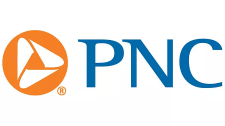
Available only to residents of the 19 states where PNC doesn’t have a retail location, which are New York, Pennsylvania, New Jersey, Delaware, Maryland, Virginia, North Carolina, South Carolina, Georgia, Alabama, Florida, Ohio, West Virginia, Kentucky, Illinois, Michigan, Indiana, Missouri, Wisconsin and Washington DC.
PNC’s online-only high-yield savings account offers a decent interest rate, no minimum initial deposit, no minimum balance, no monthly maintenance fee or other fees.
Interest rate: 0.4% APY
Availability: Accessible in the 19 states that do not have a PNC branch
Minimum deposit: $0
Monthly fees: $0
Vio Bank Online High Yield Savings Account
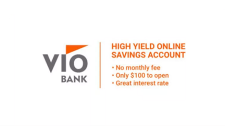
A subsidiary of MidFirst Bank, the largest privately owned bank in the US, Vio Bank itself is a purely an online bank. Therefore, you will need to manage all your bank account transactions online – either on the bank’s website or in its app. Though Vio’s APY is not as high as that offered by other banks, its annual percentage yield is consistently competitive. That noted, you will need to make an initial deposit of at least $100 to open an account, and this online bank will charge you a $5 fee per month if you choose to have paper statements delivered. Otherwise, the fee schedule is more or less similar to what you will find at other banks.
Interest rate: 0.51% APY
Availability: All 50 states
Minimum deposit: $100
Monthly fees: $5 when you choose to receive paper statements
What are the major differences between checking and savings accounts?
Most checking accounts are designed to facilitate transactions and payments, whether via a debit card, mobile app such as Apple Pay or a paper check. Most checking accounts do not offer interest; those that do usually provide a very low rate of 0.1% or less.
Savings accounts offer significantly higher interest rates and online-only banks typically offer the highest yields. These accounts provide a safe place to store money while keeping it accessible. Until recently, savings account holders were generally limited to making six transactions per month.
How many withdrawals can I make from a savings account?
In normal times, the Federal Reserve limits account holders to six withdrawals a month (to preserve liquidity for financial institutions). In response to the pandemic, the Federal Reserve made a rule change to Regulation D allowing unlimited withdrawals without a monthly fee penalty.
What is a high-yield savings account?
A high-yield savings account offers a higher interest rate than a traditional savings account. These accounts may have certain deposit requirements, monthly fees or be available only to customers in certain states.
Traditional savings accounts at a bank will have interest rates ranging from 0.05% to 0.1% while high-yield savings can go as high as 1%.
Who sets interest rates? How often do they change? In addition, why are rates so low right now?
The Federal Reserve sets a target rate range, which influences the specific interest rates set by individual banks. These rates may change over time; and adjustments often follow a Board of Governors meeting, which takes place every five to eight weeks. Since the Great Recession period, from 2007 to 2009, the Fed has consistently kept rates low, which has led to low interest rates for savings accounts. Now, the average interest rate for savings accounts is 0.05%.
That noted, many banks would offer a higher savings rate to attract new customers. The market for high-yield savings accounts is competitive, with some banks offering particularly high rates for an introductory period. Because of this, interest rates offered by a financial institution can change quite regularly.
Do you have to pay taxes on the interest earned from a savings account?
Yes. Your bank will send you a 1099-INT form each year when your savings account earns more than $10 in interest.
The 5 Best Checking Accounts of 2021
The post The 5 Best Savings Account of 2021 first appeared on Greatofreview.
